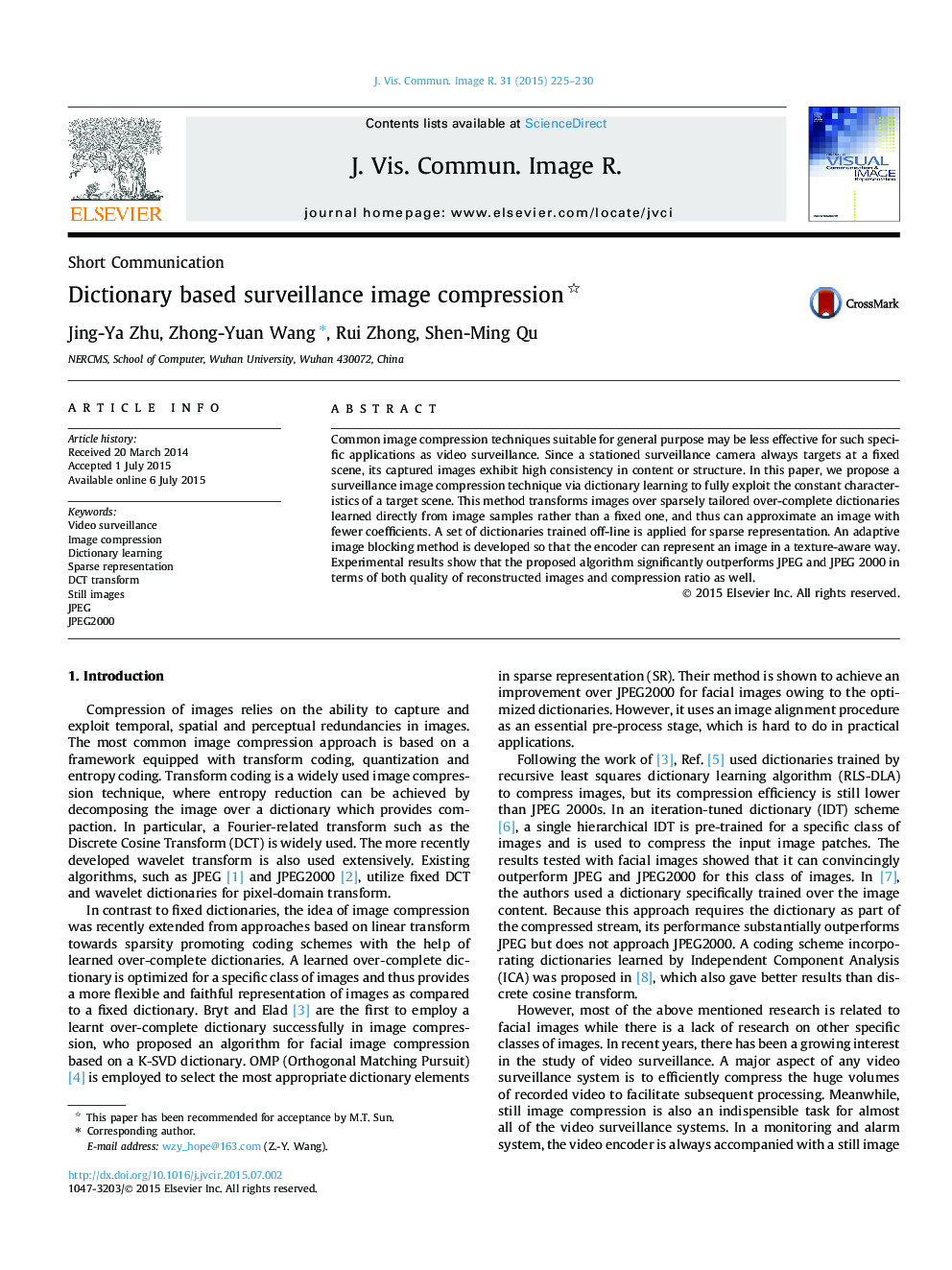| Article ID | Journal | Published Year | Pages | File Type |
|---|---|---|---|---|
| 529065 | Journal of Visual Communication and Image Representation | 2015 | 6 Pages |
•Efficiency image compression over learned dictionary for video surveillance.•Dictionaries tailored to sparse representation are learned from image samples.•Image patches are sparsely decomposed with texture-aware adaptive blocking.•Coefficients and indices of sparse matrices are encoded with entropy coder.
Common image compression techniques suitable for general purpose may be less effective for such specific applications as video surveillance. Since a stationed surveillance camera always targets at a fixed scene, its captured images exhibit high consistency in content or structure. In this paper, we propose a surveillance image compression technique via dictionary learning to fully exploit the constant characteristics of a target scene. This method transforms images over sparsely tailored over-complete dictionaries learned directly from image samples rather than a fixed one, and thus can approximate an image with fewer coefficients. A set of dictionaries trained off-line is applied for sparse representation. An adaptive image blocking method is developed so that the encoder can represent an image in a texture-aware way. Experimental results show that the proposed algorithm significantly outperforms JPEG and JPEG 2000 in terms of both quality of reconstructed images and compression ratio as well.
